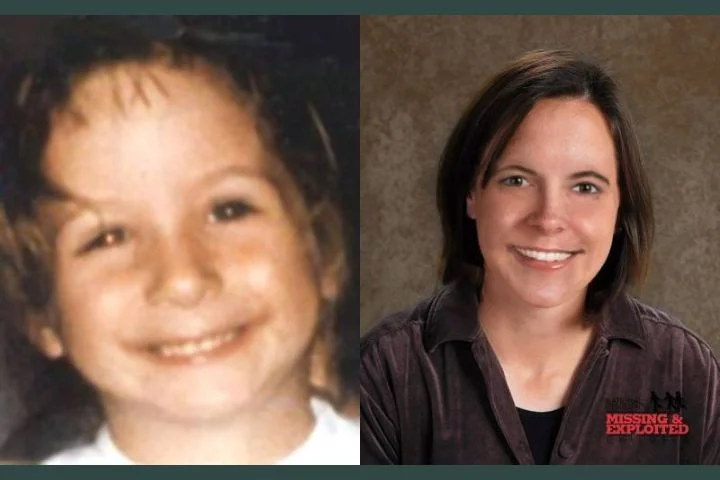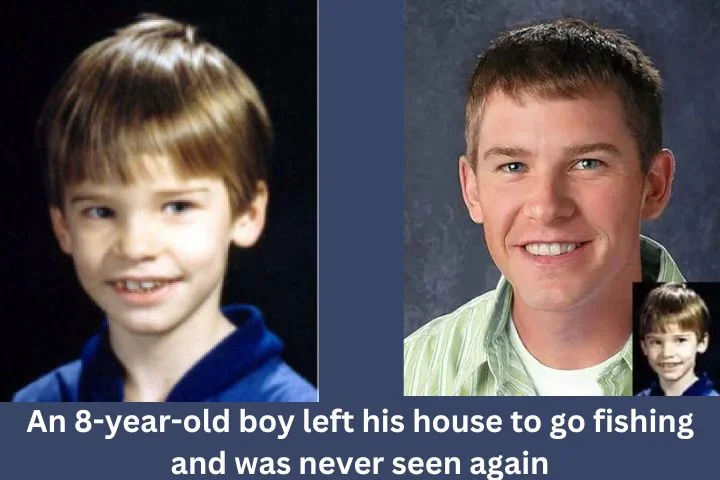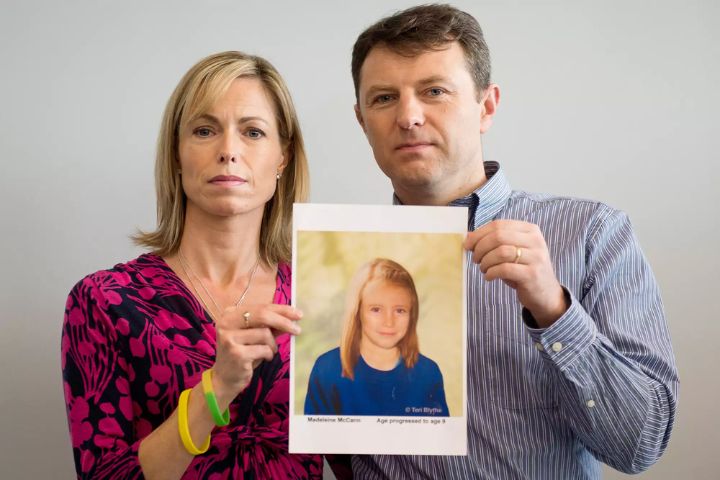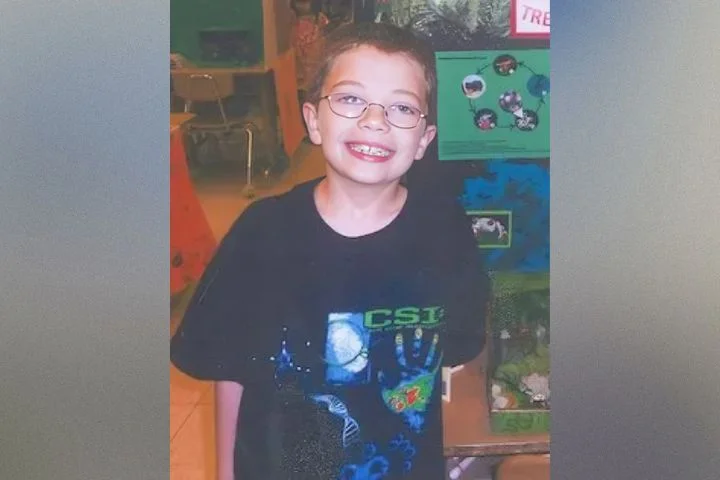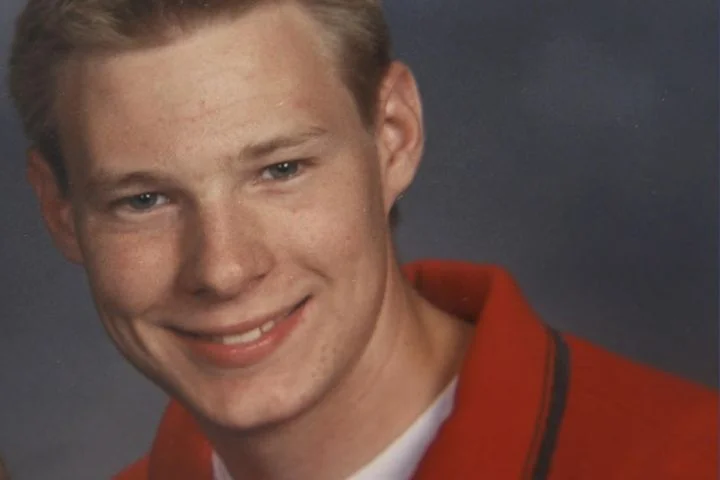Lauren Jackson was a born fighter. She had been sickly as an infant, born with deformed feet, a double hernia, a cleft palate, and problems with her eye muscles. She also had hydrocephalus, which affected her brain function. Doctors were not optimistic about her chances for survival, but she pulled through. Gradually, her health started to improve, though she still had some significant challenges to overcome. When she was only a month old, doctors put casts on her legs in an attempt to straighten them out. Because infants grow so quickly, the casts had to be changed often and Lauren had to endure weekly trips to the hospital. She also had to wear metal braces on her legs when she first started walking. Even as an infant it was apparent she had problems with her vision, so she started wearing glasses at an extremely young age. She had to have surgery to correct her cleft palate, and she also had to undergo a double-hernia operation.
Though she had a rough start in life, Lauren’s health had improved significantly by the time she was five-years-old. She loved to watch MTV with her older sister and dance around in the living room. She liked to sing, and she had a toy microphone she would serenade people with. She especially liked the California Raisins, a cartoon singing group popular in the 1980s.
Lauren’s parents had divorced in 1987, and she and her sister lived with their mother, Christine O’Donnell, in the Park Springs Apartment complex in Spring City, Pennsylvania. Her father, Mickey Jackson, lived in Philadelphia. Mickey and Christine did not have an amicable relationship. Mickey claimed that he had kicked Christine out prior to the divorce, but she told people she left because Mickey abused her. Mickey denied all abuse allegations and labeled his ex-wife a liar. The truth probably lies somewhere in the middle. Despite her hostility towards her ex-husband, even Christine admitted that he loved Lauren and had never been abusive towards the little girl. Mickey described his Saturday visits with Lauren as being the best part of his week, and she was always just as happy to see him.
On the evening of October 4, 1988, Lauren and her mother had gone to a local fast food restaurant for dinner. Lauren’s 12-year-old sister, Diana, was babysitting for some neighbors that night. Lauren had begged to be allowed to go with her — she loved spending time with her sister — but Diana had refused. She loved Lauren, but was at an age where she no longer wanted her little sister hanging around her all the time. Lauren had been disappointed, but being treated to a hamburger and French fries made up for it and she was in a cheerful mood when they returned to the apartment complex around 7:15pm. It was a nice, clear night, so Lauren was permitted to stay outside and play for a while. The apartment complex was home to dozens of children, so finding someone to play with was never a problem. Christine told Lauren to have fun and then went inside to get some cleaning done.
Around 7:30pm, Christine glanced outside to check on Lauren. She spotted her in front of an adjacent apartment building about 30 yards away, happily digging in the dirt with a young boy. A couple of minutes later Lisa Cunningham, the mother of the boy, called for him to come inside. They were getting ready to go shopping and she wanted him to get cleaned up. He said a quick goodbye to Lauren and headed into the building. When the boy and his mother left their apartment a few minutes later, there was no sign of Lauren.
Around 7:50pm, Christine checked on Lauren again but was unable to find her. For the next hour or so, Christine went all through the 151-unit complex, assuming that Lauren had to be somewhere close. By 9:15pm there was still no sign of her, and Christine was beginning to panic. In a daze, she called the police to report her daughter missing. Because Lauren was only five years old, police immediately initiated a search of the surrounding area, aided by firefighters and other volunteers. Bloodhounds, trackers, and divers were called in. A state police helicopter with a search light flew over the area as well. Bloodhounds were able to pick up Lauren’s scent heading away from the apartment complex, down Park Springs Boulevard, and down along Route 724 to the Vincent Motel, located about a mile from Lauren’s home. They lost the scent at the motel, so there was speculation that she may have been put into a car at that point.
When Lauren was still missing the following morning, the FBI joined the investigation, as did Chester County detectives. The area around Spring City was still fairly rural at the time, and the search area initially encompassed an area of about eight square miles. The abandoned Pennhurst State Hospital was included in this search radius, posing a unique challenge to the search teams. Not only did they have to search through the numerous abandoned buildings on the grounds of the former mental institution, they also had to go through a series of underground tunnels that connected the buildings. These tunnels were dark, damp, and in a state of disrepair. Search and rescue dogs were brought in to help go through the property, but an extensive search failed to yield any useful clues.
Search teams checked cars, garages, and dumpsters In addition to dry land, there were numerous marshy areas and ponds that had to be searched. Over the course of the investigation, almost 20 ponds were dragged but none yielded any clues as to Lauren’s whereabouts.
Two days after Lauren had gone missing, investigators found a footprint along Park Springs Boulevard that they believed had been made by the little girl. It was near a public payphone and was only about 50 yards away from Lauren’s apartment. Police still weren’t sure if she had been abducted or simply wandered away, but they knew she was in danger either way. It was a time of year when daytime temperatures were still fairly mild, but overnight temperatures were much colder. If Lauren had wandered off and gotten lost, she wouldn’t be able to survive long before succumbing to exposure.
While search and rescue crews continued their painstaking hunt for Lauren, detectives launched an aggressive investigation into her disappearance. If someone had taken Lauren, every hour that passed by decreased their chances of finding her alive. With that in mind, detectives treated it as a criminal investigation from the start.
Lauren’s family members were among the first people to be interviewed by detectives. Christine told them that she believed her daughter had been kidnapped. Lauren knew that she wasn’t allowed to leave the complex without her mother’s permission, and she wasn’t a child who was prone to wander. She once tagged along with a group of children who were walking to a nearby store, and she got in trouble when Christine learned she had left the apartment complex without asking first. Christine was certain that she would not have done it again.
Diana was inconsolable over Lauren’s disappearance. She blamed herself for not allowing her little sister to tag along on her babysitting job that evening. She felt extremely guilty over it, believing that if she had taken Lauren with her she never would have disappeared. Like her mother, she thought Lauren had been abducted. She described her sister as being shy around strangers and said that she never would have willingly gone with anyone she didn’t know.
Mickey Jackson believed that his ex-wife had something to do with Lauren’s disappearance. He freely admitted that he and Christine did not have a good relationship and that he had concerns about Lauren’s living conditions with her mother. The housing project was known for being a hotbed of drug activity, and it wasn’t the sort of environment he wanted his daughter growing up in. In the months leading up to Lauren’s disappearance, he had been talking about trying to get full custody of her but knew that Christine would go to great lengths to prevent that from happening. He didn’t think Lauren had been abducted, he believed Christine had given the child away. He saw it as a way for her to have the best of both worlds: she would no longer have to deal with the responsibility of being a mother, and she would ensure Mickey wouldn’t gain custody of Lauren. While he didn’t have any evidence to back this theory up, he was confident he was correct.
Police were willing to consider any theory that could possibly lead them to Lauren. They had put in hundreds of hours searching for the child but were no closer to finding her than they had been the night she went missing. Aware that the chances of finding her alive were waning, they continued chasing down anyone who might have come in contact with the little girl. There were several kids living in the apartment complex that had been playing outside on the night Lauren vanished, and they were all interviewed by detectives. Most of them remembered seeing Lauren around 7:30 that night, but none of them saw her leave the complex. She was there one moment and gone the next.
As weeks went by without any progress, parents living in the housing project grew more concerned about the safety of their children. Afraid that there was a kidnapper at large, they stopped allowing their kids to play outside without adult supervision. Hoping that money might motivate people with knowledge of the case to come forward, a reward was offered for any information resulting in Lauren’s recovery. Local newspapers had been covering Lauren’s case since the day after she went missing. Because of the publicity, word about the reward fund spread quickly. For the first couple of weeks, donations poured in. But as the search for Lauren entered its third week, her mother made headlines for a very different reason when she was arrested after filling a fake prescription for painkillers. The community that had initially rallied around the mother now began to reevaluate what her involvement in the case may have been. Once the public found out about the arrest, donations into the reward fund came to an abrupt stop.
Christine was somewhat dismissive of her crime and referred to the charges as being “stupid.” She said that she suffered from chronic pain due to a liver disorder, a fact that a doctor did confirm. When she had initially been diagnosed with the disorder, she was given a prescription for Darvon, a potent pain killer that has since been pulled off the market. Propoxyphene, the active ingredient in Darvon, was classified as a controlled substance due to its high potential for addiction. When used properly while under the care of a doctor, it was an effective way of controlling pain and pharmacies dispensed millions of tablets each year without any problems. Although Christine had started out taking the medication for legitimate reasons, she ended up becoming addicted to it.
As a controlled substance, the drug was strictly monitored by doctors to make sure the patient wasn’t taking more tablets than they were supposed to. Unfortunately, Christine had been taking more than the prescribed amount and her supply eventually ran out. To obtain more of the drug, she called a pharmacy and pretended to be a doctor. The pharmacist took the prescription over the phone, but had a feeling that the call hadn’t been legitimate and decided to look into it further before filling it. When she called the doctor’s office to verify the prescription, her suspicions were confirmed. The prescription was fake.
When Christine went to the pharmacy to pick up the prescription, she was arrested for violating state and federal drug laws. Most pharmacists are quite adept at spotting fake prescriptions, and it’s not uncommon for them to call the police and have them pick the offender up. For the most part, the people who get arrested like this do not make headlines. Christine was an exception — while a mother getting arrested on drug charges wouldn’t normally receive much publicity, a mother of a missing child getting arrested on drug charges was front page news.
There had been some people who suspected from the beginning that Christine had something to do with Lauren’s disappearance. Once news of her arrest got out, even people who had defended her at first began to think that she might have been involved. Others believed that she hadn’t played a direct role in the disappearance, but speculated that Christine could have been high on drugs and hadn’t been paying close enough attention to Lauren. Christine staunchly denied these claims. She blamed the media for blowing everything out of proportion and portraying her as a negligent mother. Her neighbors described her as a great mother, and never saw any indication that she was on drugs. Any patient who requires prescription painkillers for an extended period of time runs the risk of becoming dependent on the drug, but they also build up a tolerance to many of the side effects. Cancer patients, for example, can function completely normally while taking dosages of opioid painkillers that could be fatal to someone who had never taken the drug before. Christine had been taking Darvon for chronic pain for an extended period of time, so it’s very possible she could function normally while taking the drug. No one came forward with any evidence that Lauren had ever been neglected.
Mickey was still convinced that his ex-wife knew where Lauren was at and was purposely keeping her hidden from him. When he found out that Christine had been arrested, he went to court and filed for full custody of Lauren. He knew that a custody order wouldn’t mean anything until his daughter was found, but he wanted to make sure he had everything in place. It was a way of holding onto the hope that Lauren was alive and well and that he would eventually be reunited with her.
Investigators were working as hard as they could to make that reunion possible, but they were making very little progress. It had been a difficult case from the very beginning. They had been given conflicting witness accounts about when and where Lauren had been seen last, and they had found no physical evidence to help them determine if she had been abducted or not. As weeks turned into months, they were less optimistic on their chances of solving the case. Then the months turned into years, and the detectives who had originally investigated the case began to retire, turning the case over to the next generation. The case had baffled the department in 1988, and it continues to baffle detectives today. No trace of Lauren has ever been found. The investigation is still considered active and is reviewed by detectives annually, but there have been no new leads in years.
It doesn’t seem possible for a five-year-old girl to simply vanish from an apartment complex while surrounded by other children, but that’s exactly what Lauren did. During the course of the investigation, detectives considered several different theories about what might have happened. When people hear about a missing child, they normally picture a stranger coming out of the shadows and grabbing the child. Abductions like this are extremely rare, but they do happen. It’s possible that Lauren was taken by a complete stranger, but no one from the apartment complex recalled seeing anyone they didn’t recognize on the night she went missing. Several witnesses recalled seeing Lauren walking alone towards her apartment building around 7:30pm, and no one remembered seeing her stopping to talk to anyone. Her walk should have been short — witnesses placed her within 20 yards of her front door — but at some point, something made her veer off course.
Christine told police that there was no way Lauren would have wandered away, because she knew that she wasn’t supposed to leave the apartment complex unless there was an adult with her. But small children tend to react to situations without using logical reasoning. It’s possible something near the road caught Lauren’s eye — a butterfly, a balloon, a dog — and she ran for a closer look without really thinking about what she was doing. Once she was closer to the road, and out of sight of the other children, she could have been in danger without ever realizing it.
When Christine called the police on the night that Lauren disappeared, they found no evidence of an abduction or foul play. They made the decision to treat it as a criminal investigation due to her young age, but they also had to consider the possibility that she had wandered away on her own and was just lost. Children get lost far more frequently than they get abducted, but they are usually located fairly quickly. The search for Lauren was intense, involving hundreds of volunteers. Police were confident that they had checked every possible area for Lauren. Unless she had somehow managed to end up in an area that was undetectable and inaccessible to the rescue workers — and their dogs — she should have been found.
Investigators thoroughly searched all along the road leading away from the apartment, but they found no evidence of a struggle. They considered the possibility that Lauren had been hit by a car after running into the road, but they found nothing to indicate any kind of accident. There was no blood and there were no pieces of glass or plastic in the road. No one who had been outside the apartment complex that night had heard any sounds of an accident, either. They did find some footprints on the side of the road that they believed could be Lauren’s, and a bloodhound was able to track her scent leading away from the apartment complex, down the road, and into the parking lot of a motel. Neither the bloodhound nor any of the investigators found anything indicating that Lauren had been inside of the motel, though.
Detectives were confident that Lauren had been in the motel parking lot at some point that night, but they still weren’t sure just how she got there. It seems unlikely that she would have walked all the way from her apartment complex to the motel by herself. Judging by the reaction from the bloodhound tracking her scent, she took a straightforward path to the motel and not the kind of erratic, meandering path one would expect a small child to take. This could mean that there was someone walking along the road with her, perhaps leading her to the hotel. If that were the case, the person was probably someone she knew.
Mickey Jackson continued to insist that Christine had done something with Lauren, while Christine vigorously denied this and said she had absolutely no idea where Lauren was. There’s a chance that both of them were correct. In the days after Lauren went missing, detectives began hearing rumors that Christine’s family had some concerns about how well Lauren was being cared for by her mother. Could some of Christine’s family members have taken Lauren without Christine’s knowledge in order to get her away from what they considered to be unacceptable living conditions? This is just speculation — detectives were unable to find evidence to prove or disprove the theory — but it would explain why Lauren would willingly walk away with the person. By leaving their car at the nearby motel and walking to the apartment complex, they could avoid the risk of Christine recognizing their car. Of course, this would open them up to other risks. Walking back to the motel with Lauren would take much longer than driving and would increase the chance that they would be seen with the little girl. A rumor began circulating that out-of-state members of Christine’s family had been staying at the Vincent Motel when Lauren disappeared, but investigators could not confirm this. One problem with this theory is the fact that Christine had two daughters. Diana was almost a teenager at that point, and she didn’t suffer from the chronic medical problems that made her younger sister so vulnerable, but she still had to live in the same home environment. If family members thought that the living conditions in Christine’s apartment were bad enough that they saw kidnapping Lauren as the only way to save her, it’s hard to believe they would have left Diana behind.
Lauren’s father had expressed his own concerns about the conditions his daughter was living in. In considering the theory that Lauren was abducted in order to save her from her own mother, Mickey must be looked at as well. The relationship between Christine and Mickey was extremely volatile. He was insistent that Christine had hidden Lauren so he couldn’t see her, but is it possible that the reverse was true? Again, police have no evidence in support of or against the claim, but Mickey had made it clear that he didn’t think Christine was a good mother. He said he had intended to get custody of Lauren, but hadn’t filed yet at the time she went missing.
Family courts were much different in 1988 than they are today. When a couple divorced and there was a custody dispute, the mother was almost always the one who would be given custody of the children. Mothers were presumed to be the parent best suited to raise the children, and any father who wanted primary custody faced a long, uphill battle in court. This was especially true if the children involved were female. Perhaps Mickey was aware that a judge would most likely not give him custody of his daughter, even if Christine’s parenting skills were called into question. He may have felt that abduction was the only way he could get Lauren away from Christine. If Lauren had been taken by Mickey, and not by one of Christine’s family members, it would make sense why Diana was left behind: Mickey wasn’t her father. She was his step-daughter.
In January of 1991, Lauren’s case was featured in an episode of “America’s Most Wanted.” Numerous tips were called in after the show aired, and investigators followed up on all of them. Lauren’s father even traveled to Florida to look into reports that Lauren had been sighted there. Christine complained to reporters that Mickey’s trip to Florida was nothing more than an attempt to frame her for Lauren’s disappearance. Apparently some of her cousins lived there, but she claimed she had not had any contact with them in years. Regardless of his reason for going, he found no evidence that Lauren was in the Sunshine State.
Mickey wasn’t the only person who thought that Christine was involved in Lauren’s disappearance. Some people felt that Christine had sold her daughter for drug money. These rumors intensified after Christine was arrested for trying to fill a fake prescription. In December of 1988, a witness came forward and said that they had been in a nearby store parking lot on the night that Lauren went missing, and believed that they had seen her being forced into a car by a woman. The witness claimed that the little girl was screaming “no, mommy, no!” and that the woman who was shoving her into the car was Christine. Police drove the witness to the Park Springs apartment complex, and the witness was able to identify Christine. There are several problems with this witness account, however. The biggest problem is the time frame. The witness was insistent that the event had taken place at 7:00pm on October 4th. But there were numerous witnesses who told police that Lauren was seen playing outside the apartments at 7:30pm that night. This witness had also waited more than two months before going to police with this information, which was another red flag. The fact that she identified Christine in December of 1988 is of no evidentiary value. Her daughter had been missing for over two months, and the case was all over the news. Christine herself had been arrested the previous month and that received a lot of publicity as well. Her picture had been in the paper and she had been interviewed by television reporters. Almost everyone living in that part of the state would have been able to pick Christine out of a line up, whether they had ever seen her in person or not. Like all the other leads police had been given, this once was another dead end.
In the earlier 1990s, the question of whether or not Christine had anything to do with Lauren’s disappearance went before a grand jury. Christine and Diana were just two of the witnesses called to testify. Grand jury proceedings are always kept secret, so it’s unclear what kind of evidence was presented, but in the end the grand jury declined to indict Christine.
After the failure to indict Christine, the investigation began to grow cold. Detectives continue to follow up on any new leads that come in, and they’re hopeful that one day they will get the tip they need to break the case. Christine died in 2006, still maintaining she had nothing to do with the disappearance. Interestingly, her obituary listed Diana as her only child. There was no mention of Lauren at all.
Lauren Jackson vanished a week after her fifth birthday. She is a white female with brown hair and brown eyes. At the time of her disappearance, she was 2’6” and weighed about 35 pounds. She had two small surgical scars on her lower abdomen from a double hernia operation when she was an infant, and surgical scars on the roof of her mouth from surgery on her cleft palate. She needed multiple eye surgeries but went missing before they could be completed. When she was last seen, she was wearing a long-sleeved white shirt with a picture of a California Raisin on the front and on the back, black knit pants, white socks, and white Reebok sneakers with pink laces. If you have any information on Lauren, please contact the East Vincent Police Department at 410–431–6363.
